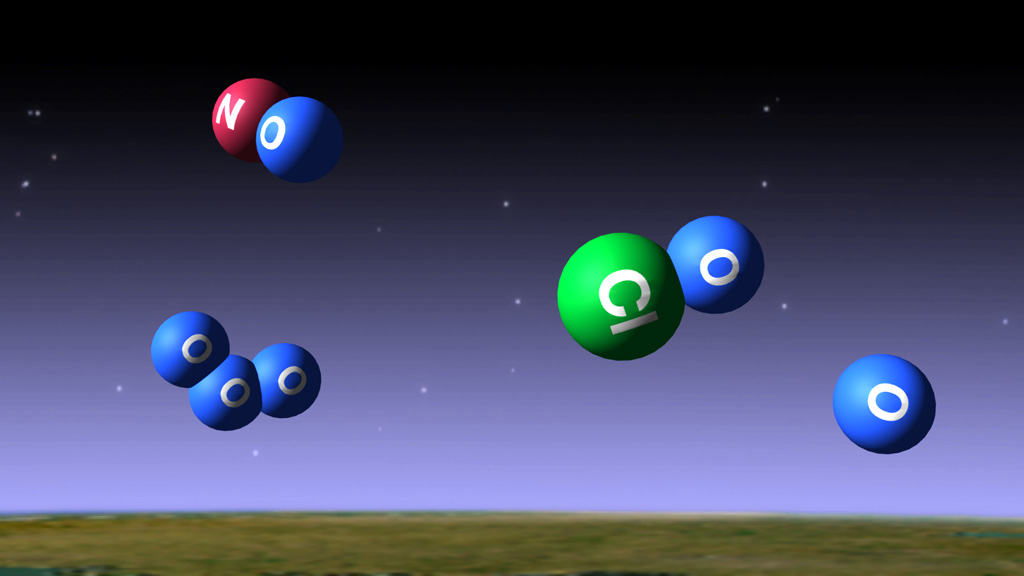Earth
ID: 10823

Each spring in the Southern Hemisphere marks the beginning of a precipitous annual decline in ozone levels over Antarctica. The process starts in the dark of Antarctic winter as sub-freezing temperatures give rise to large numbers of wispy, iridescent clouds located high over the continent, 80,000 feet up in a layer of air called the stratosphere. The clouds are key to the depletion of ozone because a cascade of ozone-depleting reactions, fueled by human-generated chlorofluorocarbons, halons and methyl bromide compounds, occur within them. When the sun shines over Antarctica in the spring, its rays release chlorine and bromine atoms from these chemicals in forms that attack ozone. The atoms eat away as much as 70 percent of the ozone layer, creating an "ozone hole" to form over the region. So far, the hole appears slightly larger than it was this time last year, but it won't reach its maximum size until mid-October. In the visualization below watch the ozone hole grow from July 1 to September 16, 2011.


Up In The Stratosphere, Ozone Thins Again



Story Credits
Please give credit for this item to:
NASA's Goddard Space Flight Center
Visualization courtesy of Eric R. Nash, Ozone Hole Watch, NASA/GSFC
Image of Polar Stratospheric Clouds courtesy of NASA/GSFC scientist Paul A. Newman.
NASA's Goddard Space Flight Center
Visualization courtesy of Eric R. Nash, Ozone Hole Watch, NASA/GSFC
Image of Polar Stratospheric Clouds courtesy of NASA/GSFC scientist Paul A. Newman.
Short URL to share this page:
https://svs.gsfc.nasa.gov/10823
Keywords:
SVS >> App
NASA Science >> Earth
https://svs.gsfc.nasa.gov/10823
Keywords:
SVS >> App
NASA Science >> Earth







